
|
It kept as bright as 6-7 mag for a long time from 2011 summer to 2012 spring. Now it is fading. But it is bright as 10.0 mag still now (May 27, Salvador Aguirre). It will be unobservable soon in late June. But it will appear in the morning sky again at 12.5 mag in October.
Date(TT) R.A. (2000) Decl. Delta r Elong. m1 Best Time(A, h)
June 2 8 57.16 25 58.0 3.003 2.613 58 10.0 18:25 (148, 22)
June 9 9 0.66 24 1.1 3.172 2.680 52 10.2 18:25 (142, 20)
|
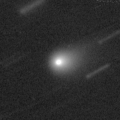
|
Already so bright as 12.1 mag (May 15, Carlos Labordena). It is expected to be bright as 9 mag from 2012 to 2013. In the Northern Hemisphere, it keeps observable in good condition for a long time until 2012 autumn when the comet brightens up to 10 mag. In the Southern Hemisphere, it is hardly observble before the perihelion passage. But it becomes observable in good condition since 2013 after the perihelion passage.
Date(TT) R.A. (2000) Decl. Delta r Elong. m1 Best Time(A, h)
June 2 14 21.17 52 47.9 2.877 3.198 99 11.8 21:35 (180, 2)
June 9 14 14.60 51 5.4 2.853 3.136 96 11.7 21:01 (180, 4)
|

|
Big asteroid discovered in 1906. It suddenly showed the cometary activity on Dec. 11, 2010, probably due to an impact of a small object. Now it is 12.0 mag (May 27, Marco Goiato). It has already turned to be stellar.
Date(TT) R.A. (2000) Decl. Delta r Elong. m1 Best Time(A, h)
June 2 16 31.45 -21 45.1 1.432 2.446 177 11.8 23:45 (180, 77)
June 9 16 24.50 -22 20.7 1.441 2.447 169 12.0 23:11 (180, 77)
|
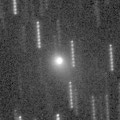
|
It brightened much faster than expected. Now it is so bright as 11.2 mag (May 14, Juan Jose Gonzalez). In the Northern Hemisphere, it keeps observable at 12-13 mag in good condition until early 2013. In the Southern Hemisphere, it is not observable until late 2012.
Date(TT) R.A. (2000) Decl. Delta r Elong. m1 Best Time(A, h)
June 2 5 56.28 83 46.0 2.506 2.218 61 12.7 18:25 (173,-33)
June 9 7 24.26 80 8.7 2.541 2.197 59 12.7 18:25 (170,-30)
|

|
Now it is 14.3 mag (Mar 13, Jakub Cerny). It is expected to be observable at 11-13 mag for a long time from 2012 summer to 2013 summer. It will be observable in excellent condition in the Southern Hemisphere. But it is not observable until 2013 January in the Northern Hemisphere.
Date(TT) R.A. (2000) Decl. Delta r Elong. m1 Best Time(A, h)
June 2 2 49.11 -40 23.6 2.853 2.641 67 13.0 5:30 (298, 36)
June 9 3 1.38 -42 34.2 2.724 2.594 71 12.8 5:33 (299, 40)
|
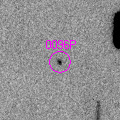
|
It has brightened up to 17.5 mag on May 15 (Martin Masek, et al.). Brightening rapidly. It will approach to the sun down to 0.12 A.U. on July 14. In the Southern Hemisphere, it keeps observable in good condition except for mid July only, in the morning sky before the perihelion passage, and in the evening sky after the perihelion passage. In the Northern Hemisphere, it is not observable before the perihelion passage. But it will appear in the evening sky at 8 mag in late July. Then it keeps observable while fading rapidly in the evening low sky.
Date(TT) R.A. (2000) Decl. Delta r Elong. m1 Best Time(A, h)
June 2 2 5.39 -31 18.6 1.151 1.172 65 13.8 5:30 (283, 42)
June 9 2 51.74 -27 23.8 1.044 1.035 60 13.0 5:33 (280, 37)
|

|
It is expected to be a great comet of -1 mag in 2013 spring. Now it is 12.6 mag (May 28, Jakub Cerny). Brightening faster than originally expected. In 2012, it keeps observable until summer while brightening gradually. It locates somewhat low in the Northern Hemisphere.
Date(TT) R.A. (2000) Decl. Delta r Elong. m1 Best Time(A, h)
June 2 16 5.59 -25 54.1 3.436 4.441 171 13.2 23:19 (180, 81)
June 9 15 56.65 -25 50.9 3.381 4.362 163 13.0 22:43 (180, 81)
|

|
Now it is bright as 12.9 mag (May 28, Jakub Cerny). It keeps 13-14 mag and observable in good condition until September.
Date(TT) R.A. (2000) Decl. Delta r Elong. m1 Best Time(A, h)
June 2 16 46.84 -12 34.5 4.141 5.143 170 13.4 0:06 (180, 68)
June 9 16 35.96 -12 26.8 4.154 5.147 166 13.4 23:22 (180, 67)
|

|
Now it is bright as 13.3 mag (Apr. 15, Jakub Cerny). It keeps bright as 13-14 mag for a long time after this until 2013. It is not observable in the Northern Hemisphere, but it is observable in good condition in the Southern Hemisphere.
Date(TT) R.A. (2000) Decl. Delta r Elong. m1 Best Time(A, h)
June 2 4 10.85 -54 3.7 5.718 5.570 76 13.6 5:30 (318, 28)
June 9 4 17.68 -53 31.0 5.716 5.580 77 13.6 5:33 (316, 31)
|
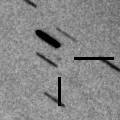
|
It will brighten up to 14 mag from May to July. It has not been observed since late January, but it must be already bright at 15 mag. In the Southern Hemisphere, it has been extremely low, but it will be getting higher gradually after this, and will be observable in good condition. It will be hardly observable in the Northern Hemisphere.
Date(TT) R.A. (2000) Decl. Delta r Elong. m1 Best Time(A, h)
June 2 3 52.97 -36 29.5 1.128 1.072 59 14.1 5:30 (299, 23)
June 9 4 42.63 -41 53.0 0.981 1.075 65 13.8 5:33 (306, 23)
|

|
This comet brightened up to 10 mag in outburst in 1995, however, it became lost after that. The condition of this apparition is bad. It is not observable around the perihelion passage. Maybe it can be recovered after summer when it appears in the morning sky.
Date(TT) R.A. (2000) Decl. Delta r Elong. m1 Best Time(A, h)
June 2 3 28.20 11 25.5 2.419 1.510 20 13.9 5:30 (254, 2)
June 9 3 49.22 12 13.3 2.440 1.545 21 13.8 5:33 (252, 4)
|

|
Another small outburst occured on May 1. It is still lbright as 12.8 mag (May 18, Jakub Cerny).
Date(TT) R.A. (2000) Decl. Delta r Elong. m1 Best Time(A, h)
June 2 12 4.95 -10 15.9 5.786 6.256 113 13.8 19:20 (180, 65)
June 9 12 5.30 -10 10.3 5.888 6.256 106 13.8 18:53 (180, 65)
|

|
It kept as bright as 11-12 mag for a long time from 2011 autumn to 2012 spring. It is not observable now. But it will appear in the morning sky again at 15 mag in autumn.
Date(TT) R.A. (2000) Decl. Delta r Elong. m1 Best Time(A, h)
June 2 5 56.82 19 22.2 3.249 2.306 18 14.0 18:25 (113, -2)
June 9 6 12.04 19 17.6 3.298 2.333 15 14.1 18:25 (111, -4)
|

|
Now it is 13.9 mag (Mar. 26, Jakub Cerny). It is expected to be 13 mag and will be observable in good condition in 2013. It keeps observable for a long time in the Northern Hemisphere. It is not observable in the Southern Hemisphere.
Date(TT) R.A. (2000) Decl. Delta r Elong. m1 Best Time(A, h)
June 2 23 26.01 53 24.7 6.750 6.400 65 14.2 5:30 (191, 0)
June 9 23 23.42 54 4.0 6.663 6.381 69 14.2 5:33 (186, 0)
|

|
Now it is so bright as 11.8 mag (May 14, Juan Jose Gonzalez). Although it was extremely faint as 20.5 mag at the recovery in 2010 autumn, it brightened rapidly. It will keep 12-14 mag and observable in good condition for a long time from 2012 to 2013. But it locates somewhat low in the Northern Hemisphere in 2013.
Date(TT) R.A. (2000) Decl. Delta r Elong. m1 Best Time(A, h)
June 2 12 50.57 11 58.1 2.593 3.146 114 14.2 20:05 (180, 43)
June 9 12 51.00 11 5.4 2.663 3.132 108 14.2 19:38 (180, 44)
|

|
It was observed at 12.5 mag on Apr. 1, as bright as expected (Michael Jager). Now it is 14.0 mag (Apr. 26, Michael Jager). In the Northern Hemisphere, it locates extremely low in the morning until June. It will be observable at high location after summer. In the Southern Hemisphere, it will never be observable again.
Date(TT) R.A. (2000) Decl. Delta r Elong. m1 Best Time(A, h)
June 2 3 4.36 41 50.8 3.151 2.307 28 14.8 5:30 (227,-12)
June 9 3 21.39 42 42.2 3.205 2.379 29 15.0 5:33 (224,-10)
|

|
Now it is 15.3 mag (May 30, Jakub Cerny). After this, it will be observable in good condition in the Southern Hemisphere while fading gradually. It will locate somewhat low in the Northern Hemisphere. In 2011, some visual observers reported it was very bright as 10-12 mag.
Date(TT) R.A. (2000) Decl. Delta r Elong. m1 Best Time(A, h)
June 2 22 57.23 -15 2.2 2.777 2.988 91 14.8 5:30 (209, 68)
June 9 23 2.95 -15 34.4 2.730 3.034 97 14.9 5:33 (194, 70)
|

|
Now it is 16.6 mag (Apr. 18, Jakub Cerny). In the Southern Hemisphere, it will be observable at 15-16 mag in good condition for a long time until 2013 summer. It is not observable at all in the Northern Hemisphere.
Date(TT) R.A. (2000) Decl. Delta r Elong. m1 Best Time(A, h)
June 2 20 45.05 -66 14.7 3.320 3.949 121 15.1 4:03 ( 0, 59)
June 9 20 44.31 -68 43.2 3.279 3.939 124 15.0 3:35 ( 0, 56)
|

|
The condition of this apparition is bad, and it was not observable around the perihelion passage. Appearing in the morning sky now. It is bright still now, about 14 mag (May 16, Terry Lovejoy). But it still locates extremely low in the Northern Hemisphere.
Date(TT) R.A. (2000) Decl. Delta r Elong. m1 Best Time(A, h)
June 2 1 1.99 -1 40.3 2.541 2.187 58 15.3 5:30 (239, 38)
June 9 1 12.30 -0 43.8 2.508 2.226 62 15.5 5:33 (234, 41)
|

|
It brightened up to 9 mag in January and February in the evening low sky. It will never be observable again in the Northern Hemisphere. In the Southern Hemisphere, it has been observable in the evening extremely low sky, but it will be unobservable soon.
Date(TT) R.A. (2000) Decl. Delta r Elong. m1 Best Time(A, h)
June 2 5 49.58 2 41.4 2.634 1.775 25 15.4 18:25 ( 98, 7)
June 9 6 7.63 2 27.2 2.710 1.839 24 15.8 18:25 ( 97, 5)
|
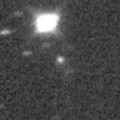
|
Now it is 16.1 mag (May 10, M. Jaeger, et al.). It will brighten up to 13.5 mag from summer to autumn. It keeps observable for a long time until December. In the Northern Hemisphere, it locates high until spring. But after that, it keeps locating low in the evening. In the Southern Henmisphere, it keeps locating low all through the time.
Date(TT) R.A. (2000) Decl. Delta r Elong. m1 Best Time(A, h)
June 2 11 0.21 33 51.6 2.027 2.131 81 15.8 18:25 (178, 21)
June 9 11 7.00 32 51.4 2.027 2.058 77 15.7 18:25 (173, 22)
|
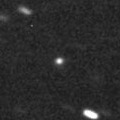
|
Bright new comet. Now it is 16.1 mag (May 14, P. Birtwhistle). It keeps observable in good condition at 14-15 mag for a long time until winter. It locates somewhat low in the Southern Hemisphere.
Date(TT) R.A. (2000) Decl. Delta r Elong. m1 Best Time(A, h)
June 2 23 9.59 29 0.2 3.802 3.645 73 16.0 5:30 (194, 25)
June 9 23 16.15 30 14.4 3.699 3.615 77 15.9 5:33 (188, 24)
|

|
Hidetaka Sato observed it at 18.6 mag on May 27. It is expected to brighten rapidly and to reach up to 10 mag in August. It keeps observable in the morning sky all through this apparition, although it locates somewhat low.
Date(TT) R.A. (2000) Decl. Delta r Elong. m1 Best Time(A, h)
June 2 23 49.91 13 52.4 1.366 1.380 69 17.0 5:30 (210, 36)
June 9 0 17.60 16 36.9 1.292 1.315 68 16.3 5:33 (207, 34)
|

|
First return of a new periodic comet which brightened up to 14 mag in 2005. It was recovered as bright as predicted. Now it is 17.5 mag (May 18, Martin Masek). It is expected to brighten up to 13 mag from summer to autumn, and will be observable in excellent condition. Now it locates high in the Southern Hemisphere.
Date(TT) R.A. (2000) Decl. Delta r Elong. m1 Best Time(A, h)
June 2 23 16.92 -18 48.0 1.555 1.842 89 16.7 5:30 (225, 68)
June 9 23 31.46 -17 0.1 1.460 1.803 91 16.4 5:33 (214, 69)
|
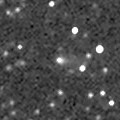
|
Now it is 16.3 mag (Apr. 24, V. Gerke, A. Novichonok, S. Plaksa). It tends to brighten after the perihelion passage. It keeps observable at 17 mag from 2012 to 2013. It locates somewhat low in the Northern Hemisphere.
Date(TT) R.A. (2000) Decl. Delta r Elong. m1 Best Time(A, h)
June 2 16 24.02 -15 39.9 2.115 3.123 172 16.7 23:38 (180, 71)
June 9 16 19.27 -15 50.6 2.125 3.121 166 16.7 23:06 (180, 71)
|

|
Now it is 16.9 mag (Apr. 14, Yasukazu Ikari). It is expected to keep 13 mag and observable in good condition in the Northern Hemisphere for a long time from 2013 to 2014. It will be low in June, and become unobservable for a while after July.
Date(TT) R.A. (2000) Decl. Delta r Elong. m1 Best Time(A, h)
June 2 10 22.31 13 6.4 6.120 6.043 80 16.7 18:25 (165, 41)
June 9 10 22.43 13 28.4 6.196 5.998 74 16.7 18:25 (157, 38)
|
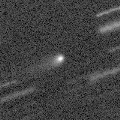
|
Now it is 16.7 mag (Apr. 14, Yasukazu Ikari). It keeps observable at 17 mag for a long time from 2011 to 2013. In 2012, it keeps observable in good condition until early September.
Date(TT) R.A. (2000) Decl. Delta r Elong. m1 Best Time(A, h)
June 2 15 0.33 8 23.6 4.800 5.622 140 16.9 22:14 (180, 47)
June 9 14 52.11 8 30.1 4.871 5.623 133 16.9 21:38 (180, 47)
|

|
It has not been observed since 2011 March. Juro Kobayashi detected a possible image of this comet at around 19 mag on Apr. 28. It is predicted to brighten up to 17 mag and will be observable in good condition from spring to summer. But actually, it seems much fainter than expected.
Date(TT) R.A. (2000) Decl. Delta r Elong. m1 Best Time(A, h)
June 2 19 36.50 -6 28.5 1.341 2.178 134 17.0 2:54 (180, 61)
June 9 19 35.01 -5 59.9 1.312 2.196 141 17.0 2:25 (180, 61)
|

|
Now it is 17.2 mag (May 27, P. Birtwhistle). It is expected to approach to the earth and to be observable at 9-10 mag in good condition in winter. The condition is good in the Northern Hemisphere. It locates low in the Southern Hemisphere, and will be unobservable after summer. But it will become observable in good condition after 2013 January.
Date(TT) R.A. (2000) Decl. Delta r Elong. m1 Best Time(A, h)
June 2 19 10.80 30 31.0 2.206 2.805 116 17.2 2:29 (180, 25)
June 9 18 59.32 33 54.1 2.106 2.727 117 17.0 1:50 (180, 21)
|

|
Dave Herald observed it at 18.6 mag on May 27. It will approach to the earth down to 0.17 A.U. in July. Then it brightens up to 15 mag and moves northwards very quickly. Now it locates very high in the Southern Hemisphere, but not observable in the Northern Hemisphere. In the Northern Hemisphere, it will become observable in late June, then it will be observable in excellent condition. In the Southern Hemisphere, it keeps excellent condition until July. It keeps observable also after that, but locates somewhat low.
Date(TT) R.A. (2000) Decl. Delta r Elong. m1 Best Time(A, h)
June 2 17 44.82 -60 19.0 0.363 1.314 140 17.5 1:03 ( 0, 65)
June 9 17 56.90 -57 24.5 0.309 1.280 144 17.0 0:47 ( 0, 67)
|
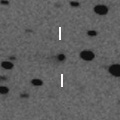
|
It keeps 17 mag for a long time from 2009 to 2013.
Date(TT) R.A. (2000) Decl. Delta r Elong. m1 Best Time(A, h)
June 2 23 41.05 13 57.2 8.584 8.310 71 17.4 5:30 (207, 37)
June 9 23 39.99 14 7.7 8.479 8.321 77 17.3 5:33 (198, 39)
|

|
Now it is 20.0 mag (May 27, Hidetaka Sato), much fainter than expected. But it is expected to brighten rapidly, and to be observable in good condition at 16.5 mag from summer to autumn.
Date(TT) R.A. (2000) Decl. Delta r Elong. m1 Best Time(A, h)
June 2 23 4.66 -14 3.9 2.008 2.248 89 18.1 5:30 (212, 66)
June 9 23 13.37 -12 39.0 1.912 2.227 94 17.9 5:33 (199, 67)
|
|
![]()
 29P/Schwassmann-Wachmann 1
29P/Schwassmann-Wachmann 1 78P/Gehrels 2
78P/Gehrels 2 C/2010 S1 ( LINEAR )
C/2010 S1 ( LINEAR ) 246P/2010 V2 ( NEAT )
246P/2010 V2 ( NEAT ) C/2011 Q2 ( McNaught )
C/2011 Q2 ( McNaught ) C/2011 A3 ( Gibbs )
C/2011 A3 ( Gibbs ) C/2011 O1 ( LINEAR )
C/2011 O1 ( LINEAR ) 71P/Clark
71P/Clark 21P/Giacobini-Zinner
21P/Giacobini-Zinner C/2012 CH17 ( MOSS )
C/2012 CH17 ( MOSS ) C/2012 J1 ( Catalina )
C/2012 J1 ( Catalina ) 185P/Petriew
185P/Petriew 258P/2012 K2 ( McNaught )
258P/2012 K2 ( McNaught ) 152P/Helin-Lawrence
152P/Helin-Lawrence C/2011 J2 ( LINEAR )
C/2011 J2 ( LINEAR ) C/2010 R1 ( LINEAR )
C/2010 R1 ( LINEAR ) 105P/Singer Brewster
105P/Singer Brewster C/2012 K5 ( LINEAR )
C/2012 K5 ( LINEAR ) 189P/NEAT
189P/NEAT C/2008 S3 ( Boattini )
C/2008 S3 ( Boattini ) 160P/LINEAR
160P/LINEAR![]()

























